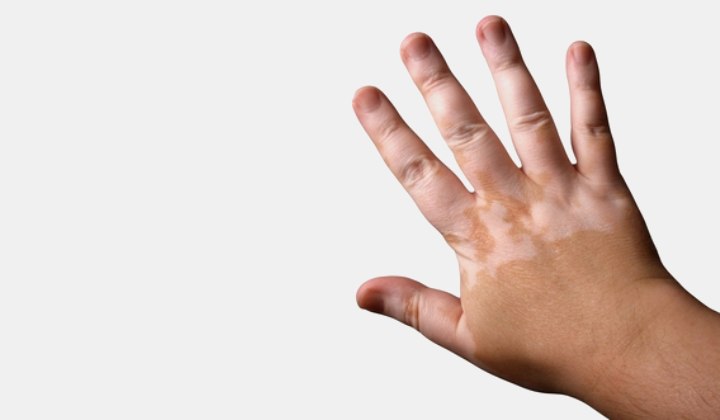Pigment Marks on the Skin

Most of us are fully aware that the color and tone of our skin (as well as the way it responds to sunlight exposure) is governed by cells in the skin that produce pigmentation known as melanin. The amounts of melanin in the skin give us the full spectrum of skin colors – everything from pale ivory to dark black. The various ethnic groups – Negroid, Caucasoid, and Mongoloid - each have “typical” melanin level-ranges, giving the spectrum of skin shades commonly found within each ethnic group.
However, there are factors and conditions that can result in abnormal melanin production. There are genetic abnormalities that can result in lack of pigmentation – albinism – as well as some rare diseases – such as Addison’s Disease – that can cause the skin to appear “suntanned” without exposure to the sun.
Melasma
Melasma is a fairly common disorder that causes dark, blotchy patches on the face. The patches darken as they are exposed to the sun and will often turn brown in the summer and fade in winter. Although men are known to suffer from melasma, the condition usually affects women and often appears in women taking birth control pills or hormone replacement therapy, or who are pregnant.
When it appears in pregnant women, it is called chloasma and usually – but not always - disappears after a baby is born. Women who have chloasma should wait several months after delivery before contemplating a cosmetic procedure. Women taking birth control pills who experience melasma should speak to their doctor about another form of contraception. Changing pills, however, will usually have no effect on the melasma you already have. Your dermatologist may suggest prescription bleaching creams, or a peel.
Solar Lentigoes
Solar Lentigoes are also known as age spots or liver spots, and are flat brown discolorations of the skin that appear on sun exposed areas such as the backs of hands and the face. These harmless discolorations have nothing to do with how old you are or how well your liver functions. They are the result of years of sun exposure and are caused by a local increase in pigment producing cells. The dermatologist may recommend freezing or laser removal of them.
Post-inflammatory Hyper-pigmentation
Post-inflammatory hyper-pigmentation results from any inflammatory injury to the skin. Acne — particularly cysts or nodules — can leave these sorts of marks. So can insect bites, oven burns, scars and eczema. Chemical peels or laser treatments can also cause hyper-pigmentation in susceptible individuals. Even seemingly innocuous things like leg waxing and electrolysis can leave hyper-pigmentation marks. The degree of hyper-pigmentation varies depending on which part of the body it appears. Discoloration on the torso and lower body tends to be much darker than discoloration appearing on the face. The darker your skin, the more prone you are to this type of hyper-pigmentation. The dermatologist may recommend prescription fading creams, perhaps followed by a peel.
Moles

Moles are usually best left alone or cut out. This will always leave a scar. If you have any mole that shows any signs of changing – growing larger, darker, developing signs of inflammation – you should report it immediately to your doctor. You should also make a practice of regularly monitoring of any mole on your body, enlisting the assistance of a loved one if necessary.
Treatments
Most skin discolorations can be treated by a variety of means – laser therapy, chemical peels, prescription bleaching creams, etc. Some of which are more or less effective depending on the type of discoloration being treated. You will also find a variety of over-the-counter treatments claiming to lighten age spots and discolorations.
The problem with the over-the-counter treatments is one of expectations. People who try these treatments often expect more than the treatments can deliver. You will never get an OTC bleaching cream or chemical peel formula that can match the results of a prescription service. While OTC bleaching creams and chemical peels can show results in typically less severe cases, you have to keep in mind that these treatments are only intended for less severe cases.
You should also make sure you are fully aware of the after-effects and recovery time of any cosmetic procedure you are considering. Many of the more severe forms of discoloration require multiple applications of laser therapy or chemical peels before real results are experienced. The recovery periods between treatments and the expense of multiple treatments can be far greater than anticipated, and is always a point of consideration before deciding upon a course of treatment.
© Greatestlook.com
See also:
Disorders of the skin
Signs and causes of aging skin